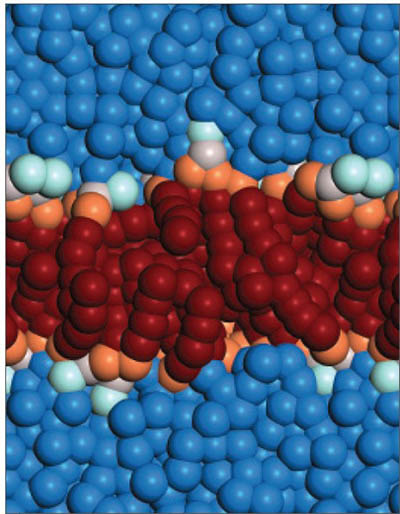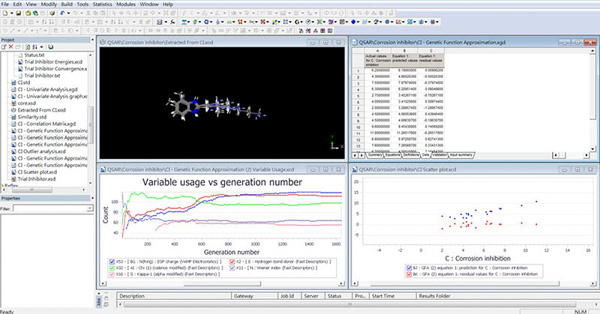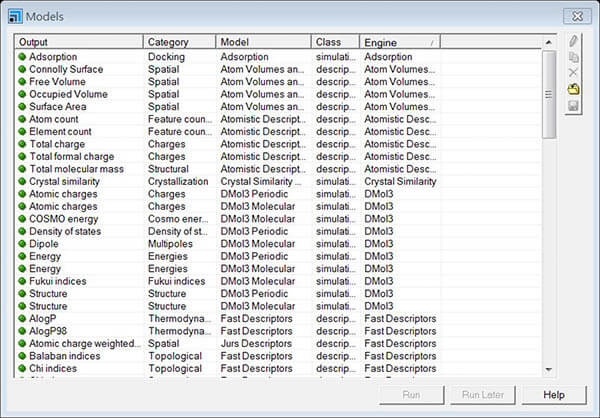Visualization and Statistics Software
The most user-friendly visual interface and analysis tools!!
Materials Studio's visualization and statistical tools enable you to quickly screen compounds and obtain greater insight about factors affecting properties. Using these tools, chemicals and materials companies can determine structure-activity relationships and then predict the properties of novel materials faster than ever before.
Materials Studio allows you to easily build, modify, visualize and simulate a wide range of materials including:
- Polymers
- Surfactants
- Molecular/Inorganic crystals

QSAR
The QSAR module is a comprehensive set of tools for creating statistical regression models between experimental information ('activity') and molecular level characteristics ('descriptors'). The method utilizes study table documents, within Materials Visualizer. The method requires a training set of materials where the property of interest is known. Molecular descriptors can then be calculated and a mathematical regression linking the property to the descriptors can be generated. This mathematical model can then be used predictively for materials with unknown activity. It is also possible to include descriptors that describe processing conditions and formulation data. Additional functionality within the module allows the user to probe the diversity of the training set and correlations between individual descriptors and the activity.
The descriptors that can be calculated include a wide range of properties. These can be supplemented by characteristics calculable with other modules: Forcite, VAMP, fast descriptors. These additional descriptors allow a wider range of material characteristics to be accurately modeled.
The basic regression algorithms can be supplemented by the very flexible and robust genetic function algorithm. This method is ideally suited to finding multiple regression minima, which can be highly valuable when dealing with large data sets. The algorithm works with a "survival of the fittest" concept: descriptors that are seen as having an influence over the activity are passed on to the next generation, those which do not are allowed to die out. Cross-population of the surviving descriptors generates increasingly accurate models.

QSAR PLUS
QSAR Plus extends the functionality of the QSAR module to include more advanced model building methods and accurate quantum mechanical descriptors. A model building method based on a back propagation neural network is included to allow construction of non-linear models with multiple response columns. The DMol3 descriptors provide atom-based descriptors, such as Fukui functions and atomic charges, allowing the construction of models where reactivity is an underlying driving force. The DMol3 descriptors also include geometry optimization and accurate energies for molecular and 3D periodic systems.


